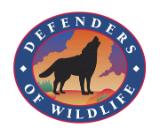Blending Ranching and Wildlife Conservation by Living Lands
In the summer of 2005, the Eastern Sierra Land Trust (ESLT) was presented with a unique opportunity to blend landscape-scale habitat conservation with active cattle ranching in eastern California. Bill Bramlette, a fourth-generation landowner of a 900-acre cattle ranch in Benton Hot Springs Valley, approached ESLT about putting a conservation easement on his land.
Mr. Bramlette and his family have grazed cattle on the property since the 1920s, and he expressed a strong desire to protect wildlife habitat while continuing to ranch and graze livestock. A biodiversity microcosm, the ranch’s 900 acres range through sagebrush-scrub covered hillsides, wet and alkali meadows, springs, seeps, riparian wetlands and ponds. Migratory birds abound, sensitive plants grow throughout, and rare endemic spring snails thrive in the many springs and seeps.
“This land is full of cultural, historic and natural resources that define not only the property but the region as a whole,” explains Karen Ferrell-Ingram, ESLT’s former lands director, who played a large role in putting this project together. Now serving as their executive director, she reminisces, “It was a property we didn’t want to let go.”
Needless to say, ESLT jumped at the opportunity and immediately formed a partnership with the landowners to develop an effective conservation plan for the ranch. This project is the first in the region to formally establish wildlife-friendly grazing practices on private lands and the first for the land trust to monitor cattle grazing impacts on easement lands. Their hope is that this project will serve as a demonstration to other land managers in the region.
With help from a Living Lands Biodiversity Grant from Defenders of Wildlife, ESLT has inventoried and mapped the habitats found on the property and designed a monitoring plan to document habitat quality and the impacts of cattle grazing. They are using this baseline to develop an adaptive management strategy with the landowner, which will be updated each year. Their goal is to protect the most sensitive habitats and initiate low impact grazing practices on the less sensitive lands to maintain biodiversity while still providing economic benefit to the landowner.
The project has gained significant attention in the local community with a large celebration held on the property to commemorate the easement signing. ESLT is also engaging the public in volunteer invasive species events on the ranch to help restore wildlife habitat and educate the community about invasive plants. And ESLT continues to learn and grow. The conservation plan that they have developed is a living document that will be adapted continuously as they test and refine land management strategies. Such a sensitive approach to land management will allow future generations of the Bramlette family and countless wild things to continue to live on and enjoy the land as they have for generations.
Visit the Eastern Sierra Land Trust to learn more.







